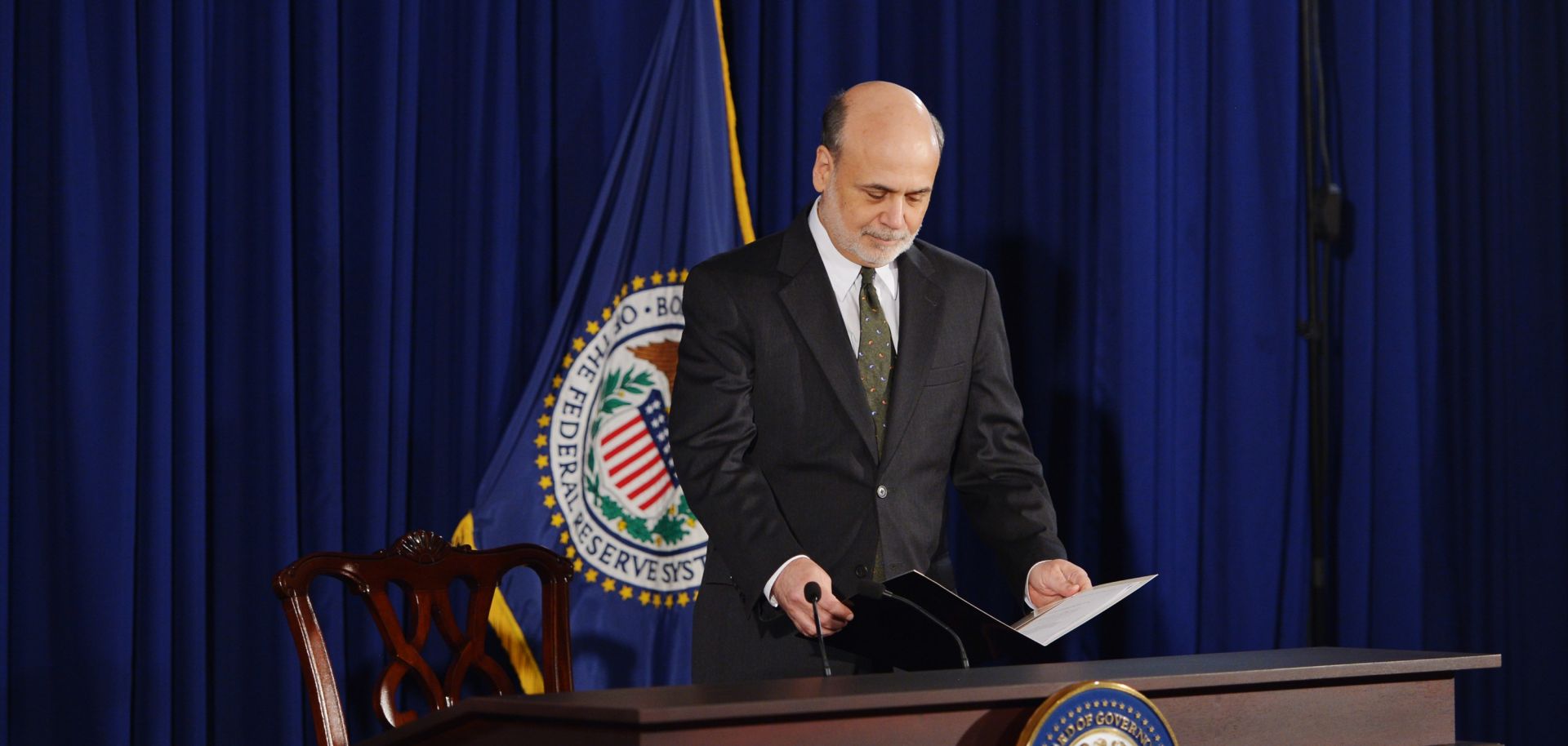REFLECTIONS
What the End of U.S. Quantitative Easing Means
Oct 29, 2014 | 23:11 GMT

Federal Reserve Chairman Ben Bernanke at the Federal Reserve Board Building in Washington, DC, June 19, 2013. The Fed's policy board kept its quantitative-easing program, aimed at holding interest rates down, locked in place for 2013, saying that unemployment remains high and growth is still being held back by government spending cuts. But Bernanke said that if growth continues to pick up pace, the Fed could begin reeling in the $85 billion-a-month in bond purchases sometime later this year, and bring the operation to a close by mid-year 2014.
(MANDEL NGAN/AFP/Getty Images)
Subscribe Now
SubscribeAlready have an account?
